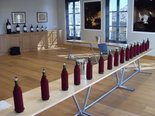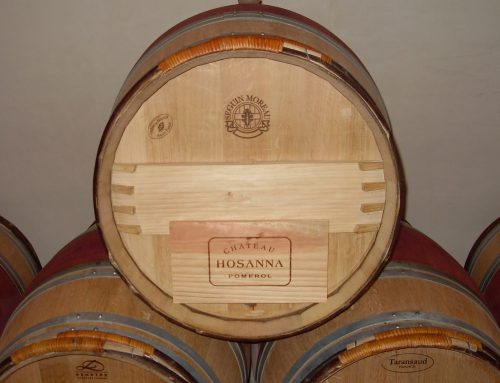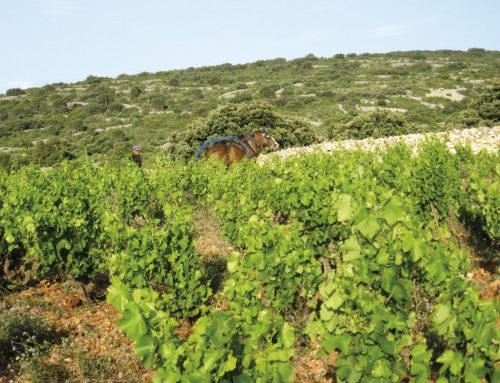In October, I reported on Bordeaux’s harvest of concentrated fruit-flavored grapes. At that time, I wondered whether the wines would have the required tannins and acidity, two necessary conditions for balance and aging. The question on my grape-stained lips was this: Would the 2009 vintage be the equal of the great 2000 and 2005 wines, as some producers were already suggesting?
Now we have a clearer, but not perfect, picture of the 2009 wines as the malolactic fermentation has ended and the wines are settled into their barrels for the 18-to-24- month aging regimen. Two weeks ago, I spent five days tasting more than 300 wines in nearly all the major appellations. These wines are only 8 months old, and will be aged at least until spring or summer 2011 before the final blending and bottling.
But what will remain constant is the wine’s DNA: richness or thinness of the juice; the presence or absence of tannins; the intrinsic balance of the two. The winemaker can mitigate or mask flaws in the final blend, but cannot make a thin wine muscular, or turn a green vegetal scented-and-flavored wine into one of ripe fruit flavors, nor erase aggressive tannins from an unbalanced wine.
Bordeaux is divided by the Gironde River into two sections known as the Left Bank and the Right Bank. Today, I’ll report on wines from renowned Left Bank appellations Pauillac and Margaux, along with a few wines from St. Estephe and St. Julien. All the wines for the week were tasted blind to avoid being influenced by prior experience with any chateau’s wine.
DAY ONE
Pauillac and St. Estephe produce Bordeaux’s more structured wines, based principally on cabernet sauvignon, with merlot and petit verdot employed for complexity, color and softness. If any appellation was going to answer my question about structure, it would start here. All wines are from Pauillac, except where noted.
Excellent: Chateau Lafite-Rothschild, Ch. Latour, Ch. Baron Pichon de Longueville, Ch.d’Armailhac, Ch. Lynch-Bages, Ch. Meyney(St. Estephe), and Ch. Duhart-Milon shared very rich blackberry and plum-like flavorful fruit, integrated tannins and acidity, and a long, balanced finish.
Very Good: Ch.Croziet-Bages, Ch. Les Ormes de Pez(St. Estephe), Ch. Grand-Puy-Ducasse, Ch.Pedesclaux, Les Forts de Latour(the second wine of Ch. Latour) exhibited rich blackberry-and-black cherry-flavored fruit, good tannins and acidity, and a balanced finish. Some could develop to the level of excellence, but all will be very pleasing.
Good: Ch.Tour Sieujean, Ch.Lafleur-Peyrabon, Ch. Clerc-Milon, Ch.Fonbadet, Echo de Lynch-Bages(the second wine of Ch. Lynch-Bages) Carruades de Lafite(the second wine of Ch. Lafite-Rothschild) shared good black cherry and cranberry fruit flavor, mild tannins and acidity, and a finish that was pleasant but shorter than the higher rated wines.
Average: Ch.Batailley, Ch.Lynch-Moussas, Ch.St. Mambert had light color, mild to thin cherry and cranberry fruit flavor, and lacked balance and with a diluted or short finish.
Last: Iris du Gayon had a slightly translucent cherry hue, light body, and mild red fruit aroma and flavor with a diluted feel on the palate and short finish; it was oddly out of character with the other wines.
Day Two
This day’s focus was on the wines of Margaux, which in my experience is the transition appellation. By that I mean its chateaux use more merlot than its northern neighbors St. Estephe, Pauillac, and St. Julien, and more cabernet sauvignon than Right Bank wineries. Its use of all five Bordeaux grapes- cabernet sauvignon, merlot, cabernet franc, petit verdot, and malbec- gives its wines the broadest palate. And as the largest appellation, it has a diversity of soils. If there is any grape that is superlative or problematic in a vintage, you’re most likely to find it in Margaux.
At its best, Margaux is a velvety, plush wine, with less force in the mouth than wines from the northern appellations because of a lower percentage of cabernet sauvignon in the blend. It is Margaux’s extensive use of all five grapes that makes it the crossroads of Bordeaux and an early warning system for the strength of a vintage.
Excellent:Ch.Palmer, Ch.Brane-Cantenac, Ch.Kirwan, Ch. Cantenac-Brown, Ch.Deyrem-Valentin, Ch.Grand-Tayac, Ch. d’Issan, “M” de Ch.Malleret, Ch.Prieure-Lichine, Ch. Rauzan-Segla, Ch.Siran, Ch.Monbrison, Ch.La Tour de Bressan, and Ch.Desmirail were harmonious, with black cherry and cassis flavor profile and a long elegant flavored finish.
Very Good:Ch.d’Angludet, Ch.Boyd-Cantenac, Clos du Jaugueyron, Ch.Duzac, Ch.La Gurgue, Ch.La Galiane, Ch. Haut-Breton-Larigaudiere, Ch.La Bressane, Ch.La Tour de Mons, L’Aura de Cambon, Ch.Mongravey, Ch.Paveil de Luze, Ch.Moutte Blanc, Ch.Lascombes, Alter Ego de Palmer(the second wine of Chateau Palmer) had the same fruit profile as the first-tier wines but with just a tad less balance or length, and by the time these wines are bottled in 2011, more than a few will be excellent.
Good:Ch.Charmant, Ch.d’Arsac, Ch.Ferriere, Gallen de Ch. Meyre, Ch.Pontac-Lynch, Ch.Marquis de Terme, Ch.Tayac.
Shared pleasant fruit in the front palate, but some have a touch of green herbal or vegetable scent, and all shared a thinner middle palate and a shorter finish.
After the Margaux tasting, I stopped at Chateau Beychevelle in St. Julien. Its 2009 wine is filled with ripe blackberry and black cherry flavors with a tantalizing minty accent. It is perfectly balanced and merits an excellent rating. The chateau’s second wine is Amiral de Beychevelle and shares the harmonious structure of Margaux with a full mouth feel and deep black cherry flavor. Very good.
These tastings revealed the very high quality of the 2009 wines in two very important appellations. Margaux wines showed a consistency of ripe fruit flavors, good color, enticing fruit and floral aromas, and very good balance. Not a single wine was rated less than Good.
Pauillac wines were less consistent. The best are full-bodied, bursting with blackberry and black fruit aromas and flavors. They have structure for aging and flavors for pleasure. They are wines to own. Yet, other chateaux produced wines that lack substance and had a hole in the middle of the palate. Pleasing at the first sip, the flavor dissipates as it crosses your palate.
After these two days and appellations, the grape needle seemed to be pointing towards merlot as the grape to make a difference in 2009.
Part Two: Tasting report on 2009 Pessac-Leognan and Graves appellations.








Leave A Comment